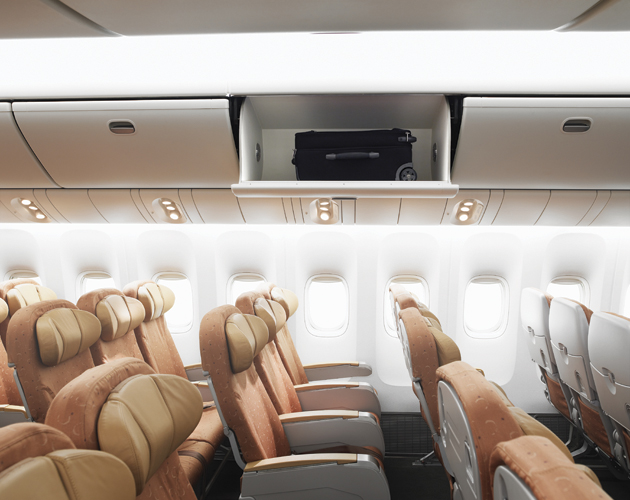Fly Without Getting the Flu

Reduce your risk of getting a cold or flu on your next flight with these six simple tips.
Excited for the trip, but a bit paranoid about picking up a bug on your flight? You’re not alone. Many of us have caught a nasty cold or even a full-blown case of the flu after flying, particularly after a long-haul flight.
And there’s some research to back up the health risks of flying. A Canadian study published in the Journal of Environmental Health Research (2004) looked at passenger health reports after they made a five-hour flight between San Francisco and Denver. The findings? Passengers were 113 times more likely to have caught a cold during the flight than during normal daily life.
Not surprisingly, researchers say the likely culprits are close quarters, shared air and low cabin humidity. As with all crowded areas, the airport and the cabin of an aircraft can be a breeding ground for germs. Depending on the type of surface, viruses can survive for hours — and the surfaces at airports may be particularly risky because they can host viruses from all over the world, including many that locals do not have antibodies for.
So what can be done? Click through for 6 tips to beat travel bugs and stay healthy on your next trip.
Wash your hands often. It’s advice we’ve heard time and again, but this most basic practice goes a long way in fighting off infection. (Are you washing your hands thoroughly enough to ward off the bad bugs? See The art of handwashing for the most effective techniques.)
Be wary of germ hotspots. These include airport check-in kiosks, airplane tray tables, seat back pockets and, of course, bathrooms. (For the latter, protect yourself further by using a paper towel to close the toilet seat before flushing, particularly in tiny airplane washrooms.) Carry an alcohol-based hand sanitizer to make it more convenient to wash your hands frequently, as well as wipes for disinfecting surfaces — particularly tray tables, arm rests, and seat belts — in the cabin.
Keep your space from the sneezers. It may seem rude, but ask to be moved if you’re seated next to a coughing or sneezing passenger. If it’s not possible to switch your seat, try to keep your head averted from your sick seatmate. Some experts also suggest pointing the air vent above your seat just slightly in front of your face so that germs from coughing or sneezing are deflected away from you.
Keep yourself hydrated. Drink at least 8 ounces of water for every two hours of your flight to counteract the low humidity in the cabin. Staying hydrated boosts the enzymes in the nasal passages, throat and eyes that are a natural defense for infection. To further protect nasal membranes from dry air, try using nasal mists and saline nasal sprays, which help to flush germs from your nose. And some passengers swear by this trick: apply a small amount of Neosporin or Vaseline just inside the nostrils. (Note: be sure to use a tissue or Q-tip if your hands aren’t freshly washed.)
Hot tea can also help to keep your protective mucous membranes working — but since booze can be dehydrating, it’s probably better to skip the on board cocktail.
Bring your own blanket and pillow. These days we can’t necessarily rely on the airline to provide blankets or pillows anyway — but even if offered, take a pass. It’s safer to carry a light foldable blanket or shawl, as well as a small inflatable or foldable pillow if desired.
Pay attention to airflow. Despite widespread concern about the safety of stale, recirculated air in the cabin, experts say that most modern aircrafts do collect fresh air from outside that gets reheated by engines and is sterilized by HEPA filters. The real risk comes when flights are delayed on the ground, with passengers onboard. Research has shown that being stuck on the runway with the ventilation system turned off dramatically increases the risk of getting sick. Current recommendations require that passengers be removed from an aircraft within 30 minutes of shutting off the ventilation system — but as we know, this procedure is not always followed. If this happens to you, be sure to speak to your flight attendant.
The bottom line: No one wants to obsess about germs, especially on holiday — but then again, who wants to be sick on vacation? Taking a few prudent steps can go a long way in protecting yourself from the bad bugs.
Sources: Journal of Environmental Health Research; MSNBC; CNN; Caring.com; Mayo Clinic